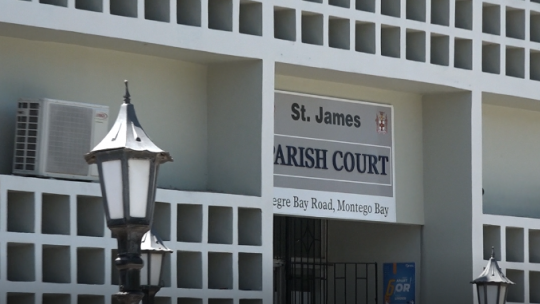Caterpillars starting to appear
Published 12:00 am Saturday, March 31, 2012
Each spring, when the trees bud out and things begin to get green, caterpillar populations emerge. That is because the young tender leaves are gourmet dining for these creepy crawlers. The intensity of the infestation depends on who you talk to and if they are yet having a problem this year.
The three main pests in Louisiana are the Buck Moth, Forest Tent and Eastern Tent caterpillars. The Buck Moth Caterpillar stings while the two tent caterpillars do not sting. The Eastern Tent is the one that builds the webbed tent in the forks of most trees. Both the Buck Moth and Forest Tent Caterpillars move about in large masses. The Eastern Tent Caterpillar is yellowish-brown with yellowish body hair and a yellow stripe down its back. Forest Tent caterpillars do not build a web. They leave a silky trail as they move about the tree. They are blue with bluish hair and a bluish head, with a series of yellow keyhole-shaped spots down the center of the back. Sprays for both tent caterpillars are the same as for the Buck Moth. The adults of the tent caterpillars are buff colored. The difference is that the Eastern Tent has a white stripe in the forewing, and the Forest Tent has a reddish-brown stripe in the forewing.
The Buck Moth feeds primarily on Live Oaks and Water Oaks. The Buck Moth Caterpillar contains the spines and will sting you if you touch them. The spines inject venom into the puncture wound, which causes a painful, burning sensation. The area may also swell and become large and red. Buck Moth Caterpillars may be around until late May.
Some homeowners think they will keep the caterpillars out of the trees by painting the trunk or wrapping it with aluminum foil. They think that the caterpillars come out of the ground. Fact is, the caterpillars are already in the trees. Their eggs were laid on the branches of the trees by the adult moths during November and December, shortly after adult emergence from the soil and mating. The adult Buck Moth s emerged from the ground where they had spent the summer in the pupal or resting stage.
The female Buck Moths lay clusters of 80-100 eggs on the small twigs of the oak tree in the canopies of the trees. The eggs hatch in late February and March as the temperature and day length increases. You may notice the masses of eggs or caterpillars in the canopy of the trees if you examine the trees with a powerful set of binoculars. As the larva feed and grow they may shed their skin several times. This sometimes causes them to lose their grip on the limb and fall from the tree. If they have not finished feeding, they will try to climb back up into the tree to feed some more. This behavior is what makes some homeowners think the caterpillars came from the ground. Actually they are just trying to get back in the tree to feed. Any close vegetation may be in jeopardy to the feeding caterpillars. In 6-8 weeks the spiny caterpillars have finished feeding and have grown to about three inches. They are now ready to migrate down the tree to the soil to pupate and rest until November and December.
People actually come in contact with the caterpillars when they wander around on the ground, in the grass, on sidewalks or in shrubs and flowerbeds. Some caterpillars may actually fall from the trees onto people and pets. Upon touch, the spines of the caterpillar puncture the skin. As the spines puncture the skin the caterpillar releases its venom, which causes a burning, stinging sensation. This may develop into a large red and swollen area. Anyone who is allergic to insect bites should seek medical attention if they are stung by the Buck Moth caterpillar. Adults should closely supervise young children who play outside as the caterpillars may fall onto them or into their food or drink or may be picked up by a young child who finds the pest intriguing or even pretty.
Control measures are twofold. After the initial egg hatch, wait about two weeks before spraying. This allows a larger percentage of the egg masses to hatch and reduces the number of applications required to control the overall population. Management of all these caterpillars requires spraying to reduce the populations. Any Pyrethroid insecticide such as permethrin, Scimitar, Battle or Bayer Advanced Garden with Cyfluthrin in combination with liquid soap is an effective control measure. The soap is used with the insecticides so that the insecticide will make better contact with the caterpillar. These materials are short-lived, are safe in the neighborhood environment and kill the caterpillars nearly on contact. Sevin is another good material that can be used, but you need to add some liquid soap to the mixture to help the insecticide make contact with the caterpillar. Bacillus thuringiensis
or Spinosad are two biological
materials that may be used by those individuals who do not want to
use insecticides. They will help to control the caterpillars but at a
slower rate since these materials have to be ingested before they can begin to work on the caterpillars. Bt is effective on all sizes of caterpillars.
Applications of the pesticides can be made on small plants and shrubs by using a pump-up sprayer. A hose-end applicator is effective and can be used to get into the trees to manage a larger portion of the population since it can shoot a stream of spray about 25 to 30 feet in the air – allowing the homeowner to spray into the trees. Where trees are very large it may be necessary to obtain the services of a professional.
Always follow the directions on the insecticide container. More is not always better. Also use protective clothing like long shirts and long pants with socks and closed toe shows when spraying insecticides to reduce the possibility of getting the insecticide on yourself.
For further information on spraying caterpillars, contact your Parish LSU Ag Center county agent or visit the Ag Center’s website at lsuagcenter.com.
If you have any questions, please contact your local LSU Ag Center County Agent. You can contact David Pichon, County Agent-St. John Parish at 985-497-3261 or by email at dpichon@agctr.lsu.edu.





